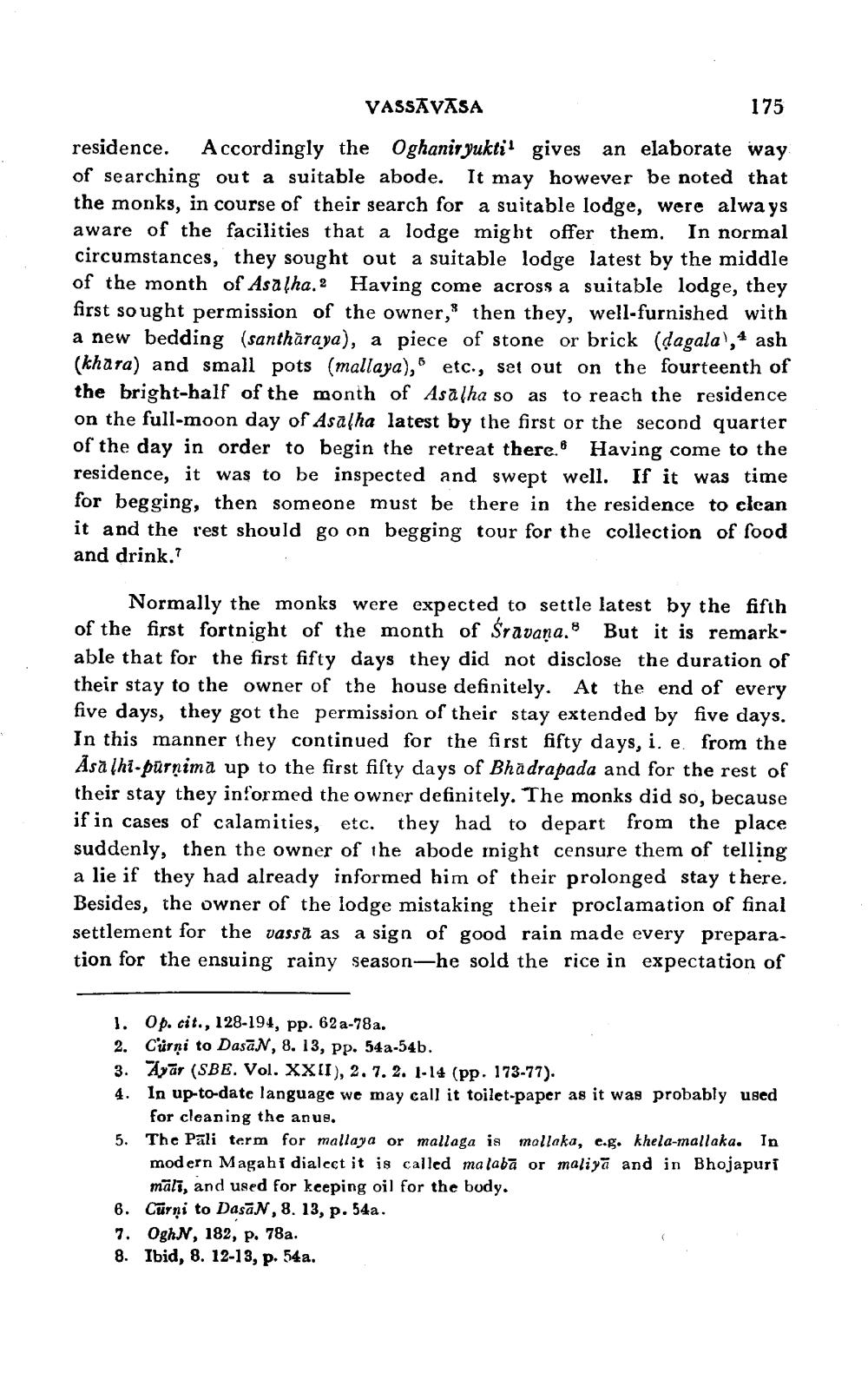________________
VASSĀVĀSA
175
residence. Accordingly the Oghanir yukti! gives an elaborate way of searching out a suitable abode. It may however be noted that the monks, in course of their search for a suitable lodge, were always aware of the facilities that a lodge might offer them. In normal circumstances, they sought out a suitable lodge latest by the middle of the month of Asalha. Having come across a suitable lodge, they first sought permission of the owner, then they, well-furnished with a new bedding (santhāraya), a piece of stone or brick (dagala, 4 ash (khara) and small pots (mallaya), etc., set out on the fourteenth of the bright-half of the month of Asalha so as to reach the residence on the full-moon day of Asasha latest by the first or the second quarter of the day in order to begin the retreat there. Having come to the residence, it was to be inspected and swept well. If it was time for begging, then someone must be there in the residence to clean it and the rest should go on begging tour for the collection of food and drink.)
Normally the monks were expected to settle latest by the fifth of the first fortnight of the month of Śravana. But it is remarkable that for the first fifty days they did not disclose the duration of their stay to the owner of the house definitely. At the end of every five days, they got the permission of their stay extended by five days. In this manner they continued for the first fifty days, i. e. from the Asalhi-purnima up to the first fifty days of Bhadrapada and for the rest of their stay they informed the owner definitely. The monks did so, because if in cases of calamities, etc. they had to depart from the place suddenly, then the owner of the abode might censure them of telling a lie if they had already informed him of their prolonged stay there. Besides, the owner of the lodge mistaking their proclamation of final settlement for the vassā as a sign of good rain made every prepara. tion for the ensuing rainy season-he sold the rice in expectation of
1. Op. cit., 128-194, pp. 62 a-78a. 2. Cürņi to Dasan, 8. 13, pp. 54a-54b. 3. Ayar (SBE. Vol. XXII), 2. 7.2. 1-14 (pp. 173-77). 4. In up-to-date language we may call it toilet paper as it was probably used
for cleaning the anus, 5. The Pali term for mallaya or mallaga is mallaka, e.g. khela-mallaka. In
modern Magahi dialect it is called ma labā or maliya and in Bhojapuri
māli, and used for keeping oil for the body. 6. Cūrni to Dasāk, 8. 13, p. 54a. 7. OghN, 182, p. 78a. 8. Ibid, 8. 12-13, p. 54a.




